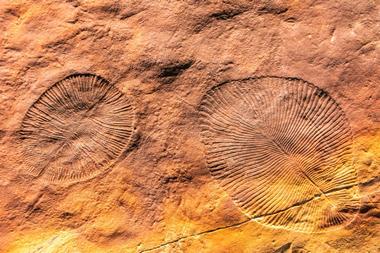Well-preserved samples enable examination of intact microstructures rather than powdered material
Analysis of intact samples adds evidence to support the claim that 3.4 billion year old microstructures are fossils of early life forms, and that organic molecular information can survive intense geological conditions, according to an international team of researchers.
When it comes to preserving fossil evidence of early life on Earth, billions of years buried at high temperature and pressure, coupled with geothermal circulation of fluids makes for tough conditions. Efforts to analyse the chemical composition of the most ancient microfossils have usually involved crushing the samples into powder – on the premise that the fossils are too degraded to yield chemical insights otherwise. But crushing the samples leaves open the possibility that any organic matter found could be from recent colonisers of the rock rather than only from the ancient microstructures.

The team examined intact microstructures from within the sedimentary chert rocks of the Strelley Pool formation in Pilbara Craton, Australia, and found nitrogen- and oxygen-rich organic molecules that were only slightly degraded, despite being exposed to temperatures above 300°C. ‘The microfossils have experienced temperature conditions so far believed to completely destroy molecular information,’ explains Julien Alleon, previously at Sorbonne University in Paris, France, and now at the Massachusetts Institute of Technology, US. However, Alleon says the team showed that, under the right conditions, such fossils can retain an ‘excellent state of chemical preservation’.
The team employed a suite of spectroscopic and microscopy techniques, including Raman microspectroscopy and x-ray absorption near edge structure (XANES) spectroscopy to explore the chemical nature of the samples. ‘We were lucky to be able to image such very well preserved specimens,’ says team member Sylvain Bernard of Sorbonne University. ‘The x-ray absorption technique that we used is highly reliable and does not suffer from analytical artifacts in contrast to many other techniques,’ he adds.
‘I would say that the authors make a convincing case that these are carbonaceous structures that are likely [formed at the same time as the surrounding rock]’, says Alison Olcott Marshall, a paleobiogeochemist at the University of Kansas, US. However, she remains a ‘Before I could definitively call these microfossils, I would like to see similar analyses done on the matrix as on the fossils, since in older rocks from the Pilbara Craton we found that the matrix, the material around the microstructures, contains multiple generations of carbonaceous material.’












No comments yet